coronAsur - a Research blog
South Asia | Southeast Asia | East Asia | Other Places | Hinduism | Buddhism | Islam | Christianity | Other Religions | All posts
 Faith, Truth Claims and Universalisms in Naturopathy: A Critical Engagement
Faith, Truth Claims and Universalisms in Naturopathy: A Critical Engagement
Biomedicine’s presence in modern day life has been so pervasive that other medicinal systems are often relegated in status to ‘alternative’ and ‘complementary.’ This reification has been challenged, both at the discursive as well as at the practice levels in the contemporary era, especially in the backdrop of the COVID-19 pandemic... contributed by Rajiv Aricat, 15 March 2023
 From COVID-19 Vaccine Hesitancy to Vaccine Acceptance in South Sumatra, Indonesia
From COVID-19 Vaccine Hesitancy to Vaccine Acceptance in South Sumatra, Indonesia
Trying to administer COVID-19 vaccines to an archipelagic population of 280 million people spread over 6000 islands is no small task. The current high vaccine uptake rate is in stark contrast to early attempts at vaccination, where hesitancy was high even though COVID-19 vaccines were life-savings. In December 2020, the results of a phone survey of 1,202 respondents in... contributed by Najmah, Kusnan and Sharyn Graham Davies, 04 February 2023
 Thinking about Contagion and Epidemic Disease in Tibetan and Himalayan Medical Contexts: Introducing the “Pandemic Narrative” Research Project
Thinking about Contagion and Epidemic Disease in Tibetan and Himalayan Medical Contexts: Introducing the “Pandemic Narrative” Research Project
The COVID-19 pandemic has offered an opportunity to revisit Asian medical ideas of contagion from fresh perspectives, textually, as well as through ethnographic research in societies in which pre-modern ideas of contagion are still part of lived medical practices. During the ARI workshop on religion, COVID-19 vaccines, and structures of trust... contributed by Barbara Gerke, Jan M. A. van der Valk, and William A. McGrath, 15 January 2023
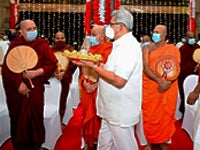 Immunity through trust in urban Sri Lanka
Immunity through trust in urban Sri Lanka
Both the Sri Narada temple in Narahenpita, Colombo, and the Sri Lankan government actively promoted techniques to avoid COVID-19 including vaccination, Ayurvedic medicine and Buddhist ritual – employed singly and plurally as pathways to immunity. Chief Incumbent Ven. Samitha Thero instructed devotees to stay away and follow all the government’s COVID-19 public health directives... contributed by Malini Bhattacharjee, 3 January 2023
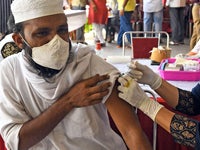 Taming the ‘Other’ during the Pandemic: A Case Study of Vaccine Governmentality in India
Taming the ‘Other’ during the Pandemic: A Case Study of Vaccine Governmentality in India
“But when it is considered that the natives of this country, naturally averse to all innovation, have yet no affection for the new practice; that the most authoritative class of them oppose it from interested motives; that the circumstances of its coming originally from the cow, an animal so highly revered by the Hindoos, so far from operating, as was at first expected, in its favour, has directly the contrary effect... contributed by Malini Bhattacharjee, 23 December 2022
 Building National Identity Through Immunity: The Politics of the COVID-19 Vaccination Campaign in China
Building National Identity Through Immunity: The Politics of the COVID-19 Vaccination Campaign in China
China launched a mass COVID-19 vaccination campaign on December 31, 2020, after the approval of domestic vaccines for emergency use. Approximately 1.1 billion Chinese people were fully vaccinated as of November 25, 2021. A total of 2,456,617,000 vaccinations have been administered to almost 88% of the population. In other words, more than 165 vaccine doses per 100 people have been given... contributed by Xuanxuan Tan, 12 December 2022
 Transformation of Diwaniyyas in Post-Covid Kuwait
Transformation of Diwaniyyas in Post-Covid Kuwait
Diwaniyyas are a fundamental part of Kuwaiti life. They are social gatherings where men congregate physically to discuss issues relevant to them. Previously, they were purely physical spaces. Their influence in Kuwait is not to be understated – these meetings wield the power to change election results. However, the Covid-19 pandemic has accelerated the transformation of... contributed by Shaun Loh, 9 September 2022
 Join from Home –Three Scenarios of Singaporean Chinese Temples in the Time of COVID
Join from Home –Three Scenarios of Singaporean Chinese Temples in the Time of COVID
The COVID-19 pandemic has forced religious organisations to shut down during the circuit breaker and to limit the number of visitors as the new norm. Different religious organisations are responding to COVID in their own ways, due to the earlier restrictions before the major easing of Covid-19 rules from Apr 26, 2022... contributed by Wu Qi, 15 June 2022
 Pandemic Cooking and Community: Home Among Foreign-born Jesuits in Japan
Pandemic Cooking and Community: Home Among Foreign-born Jesuits in Japan
The closing of food courts and restaurants worldwide during the pandemic, coincided with the increased domestic practices of home cooking and eating, with increased reliance on food delivery services. This was no different for religious communities who were confined at home and forced to innovate their ministry, but also the domestic activities for their members... contributed by Allen J. Kim, 8 June 2022
 Adapting Jainism across the ocean of Covid-19
Adapting Jainism across the ocean of Covid-19
Logging into my email from my obligatory home office in May 2020, now already two years ago, I received an email from Jainism Says Blogspot on how to spiritually navigate the Covid-19 pandemic. A few weeks before that, I had come across a YouTube song entitled "Corona se Darona" (“Do not fear from Corona”) by Vicky D Parekh, a Jain singer in India... contributed by Heleen De Jonckheere, 25 May 2022
 Taoist Medical Texts, Drug Discovery, and Pandemics
Taoist Medical Texts, Drug Discovery, and Pandemics
Throughout history, there has been a relatively long-standing connection between Taoism and medicine (Ho 2007). Nonetheless, Taoist medicine is currently outside the purview of biomedical scientists and sometimes is labelled as a heterodox medicine (Unschuld 1979: 18). This situation has gradually changed in recent decades, especially in terms of drug discovery... contributed by Jianan Huang, 20 April 2022
 ‘Sankalp se Siddhi’: The Brahma Kumaris and Pandemic Positivity
‘Sankalp se Siddhi’: The Brahma Kumaris and Pandemic Positivity
Our thoughts have the power to influence our feelings, body, nature, and the world. … We have all read the book [The] Secret. We all talk about [the] law of attraction. In Hindi, the word is very simple. Saṁkalp se siddhī: thoughts manifest … so we create thoughts that we want [to be] manifest. We want it to finish, so we create the thought, “it’s finished, it’s gone, it’s over, never... contributed by Nick Tackes, 5 April 2022
 From Mask to Cadar: The New Interpretation of Islamic Values During COVID-19 in Indonesia
From Mask to Cadar: The New Interpretation of Islamic Values During COVID-19 in Indonesia
Responses to COVID-19 in Indonesia have led not only to adopting new disease-mitigating measures like wearing masks, but also to integrating these measures into understandings of religious practice for young women who are influenced by Salafi movements. Many previous studies have focused primarily on COVID-19 and the use of public health as a rational basis.... contributed by Almunauwar Bin Rusli, 22 March 2022
 Covid-19, Medical Pluralism, and the Democratization of the Tibetan Buddhist Sodality
Covid-19, Medical Pluralism, and the Democratization of the Tibetan Buddhist Sodality
Adherents chanting this chain of words in unison, closed eyes, their focus on a fancied light; the light radiating, transforming into the Noble Wish-fulfilling Tara. I watched as practitioners from all around the world congregated to offer prayers to the holy noble White Tara, imagining her sitting on a lotus, a luminous aura.... contributed by Tanisha Verma, 3 February 2022
 Islamophobia in COVID Times: Building Transnational Muslim Solidarities Online between India and the Gulf
Islamophobia in COVID Times: Building Transnational Muslim Solidarities Online between India and the Gulf
The World Health Organization declared COVID-19 as a global pandemic on 11 March 2020. While epidemiologists were warning of community spread in some pockets of India by then, the Indian government had declared that COVID-19 was not an emergency. Yet, in a sudden move that took the nation by surprise... contributed by Sanam Roohi, 18 November 2021
 An Equal Gift of the Pandemic: Sedekah in Palembang
An Equal Gift of the Pandemic: Sedekah in Palembang
Almsgiving has long been a tradition in the Muslim society of Palembang City, Indonesia. As a result of the COVID-19 pandemic, almsgiving has transformed into both a social media practice and a project of urban development. The Bukit Lama community, Better than Begging, and One Thousand per Day... contributed by Achmad Firas Khudi, 2 November 2021
 Ushering “Saawan” in pandemic times: Shiva worship in North India
Ushering “Saawan” in pandemic times: Shiva worship in North India
The month of “Saawan” aka Shravan (July 23 to August 22, 2021) knocked on the door during the pandemic. It is the fifth month of the Hindu calendar and considered to be the most auspicious month of the year. For North Indians, it is the month of revering Lord Shiva, one of the Trimurti in Hindu religion... contributed by Sonal Mobar Roy, 14 October 2021
 Performing “Lives”: Protestant churches’ worship and fellowship during COVID-19 lockdowns
Performing “Lives”: Protestant churches’ worship and fellowship during COVID-19 lockdowns
When the Philippine government placed provinces and cities under Enhanced Community Quarantine (ECQ), schools and universities were suspended, mass gatherings were prohibited, businesses were closed, and mass transportation became restricted. Religious practices which are usually performed in the presence of... contributed by Junesse Crisostomo, 29 September 2021
 Prayers, Protocols and Pandemics, Part 3 - Josspaper Vaccinations and Re-configurations of Religious Spaces
Prayers, Protocols and Pandemics, Part 3 - Josspaper Vaccinations and Re-configurations of Religious Spaces
I have previously written two short essays on this platform documenting the impact of COVID-19 on the hosting of the Seventh Lunar Celebrations (aka the “Ghost Festival”) in Singapore, and to a smaller extent Malaysia. In this short article, I present two present-day case studies to demonstrate... contributed by Esmond Soh, 1 September 2021
 Ambal is on Holiday
Ambal is on Holiday
While the pandemic as a ‘critical event’ (Das 1995) embodies some sense of universality as every nation witnessed a rupture in the spatio-temporal ordering of their reality, anthropologists are yet to fully understand the multiple renderings of these aberrations perceived by the interlocutors of their respective field sites... contributed by Sona Prabhakaran, 23 August 2021
 Jewish Prayer Quorums in the Shadow of Corona: Congregating for Prayer when Congregating is Prohibited
Jewish Prayer Quorums in the Shadow of Corona: Congregating for Prayer when Congregating is Prohibited
The rhythm of Jewish religious life involves three daily prayer services – one in the morning, one in the afternoon, and one in the evening. These services are conducted with the participation of a quorum of ten or more, known in Hebrew as a minyan (literally: number). Traditionally such a quorum is comprised of at least ten Jewish males... contributed by Levi Cooper, 17 August 2021
 #IAMHUSSEINI: How the Covid-19 pandemic reinforced a global Shi’a community
#IAMHUSSEINI: How the Covid-19 pandemic reinforced a global Shi’a community
This blog post focuses on a talk show titled #IAMHUSSEINI to describe how the Covid-19 pandemic impacted members of the Shi’a religious community, a group that transcends national boundaries, maintains a tight connection between the personal and collective facets of the faith, and is already involved in digital religious activities... contributed by Rhys Thomas Sparey, 12 August 2021
 The Operation of a Buddhist Temple in Malaysia during COVID-19: A Case Study in Than Hsiang Temple
The Operation of a Buddhist Temple in Malaysia during COVID-19: A Case Study in Than Hsiang Temple
Due to the unprecedented Covid-19 pandemic, the Malaysian government has implemented the Movement Control Order (MCO) since 18 March 2020 to minimize the spread of Covid-19. The direct impact of MCO on the Buddhist temples in Malaysia is the halt of religious activities to the public. Most Buddhist organisations are facing challenges.... contributed by Fu Yek Ming, 5 August 2021
 Cleansing Afflictions in Sacred Places: Honouring the Ganga on Dashahara
Cleansing Afflictions in Sacred Places: Honouring the Ganga on Dashahara
The Indian environmental landscape is marked by spaces attributed with sanctity as embodiments of divine essences. They are connected by flowing waters of rivers having healing capacities and function as therapeutic places. The Ganges (or Ganga), Diana Eck (1999) suggests, is the symbol of archetypal sacred waters in Indic traditions.... contributed by Sohini Chakraborty, 15 July 2021
 "All of Singapore is now a Zawiya": Shadhili Sufism and Sensorial Challenges to Worshipping-From-Home
"All of Singapore is now a Zawiya": Shadhili Sufism and Sensorial Challenges to Worshipping-From-Home
Since March 2020, the members of the Shadhili Sufi order in Singapore have been meeting online for their weekly gathering (majlis), having been kept out and far away from their lodge (zawiya) in Malaysia due to COVID-19 and the closure of the border between the two neighbouring nations. Every Thursday evening members of the Shadhili order usually engage... contributed by Muhammad Lutfi Bin Othman, 7 July 2021
 Jewish Mourning Practices Under Lockdown and Quarantine: The COVID Kaddish Conundrum
Jewish Mourning Practices Under Lockdown and Quarantine: The COVID Kaddish Conundrum
Jewish mourning practices include the recitation of Kaddish (literally: sanctification) – a responsive prayer that affirms God’s greatness. The prayer is a central mourning ritual and is principally recited by children of the deceased. While Kaddish is not a prayer for the dead, it is perceived and experienced as a memorial prayer or a salve for the soul of the departed... contributed by Levi Cooper, 17 June 2021
 Commercialization and Transformation of Buddhist Temples in Thailand during the COVID-19 Pandemic
Commercialization and Transformation of Buddhist Temples in Thailand during the COVID-19 Pandemic
The global COVID-19 pandemic is a major public health crisis that has significantly impacted many countries economically and socially - economic depression, rising poverty, and social instability have accelerated. The everyday lives of people, traditional Buddhist ritual practices, and temple operations have also been affected, although the COVID-19 situation in many Southeast Asian... contributed by Yunkang Liu, 10 June 2021
 The Cult of Goddess Pattini at a time of Pandemic: Gammaduwa as a Strategy of Supernatural Protection
The Cult of Goddess Pattini at a time of Pandemic: Gammaduwa as a Strategy of Supernatural Protection
During times of uncertainty and danger, people often use rituals to reduce their stress and exert control over their environment. A global pandemic is also a time of significant transition and uncertainty when people have greater need for physical and social support. Over the past year, people have used their ritual traditions as a strategy of invoking supernatural power... contributed by Premakumara de Silva, 3 June 2021
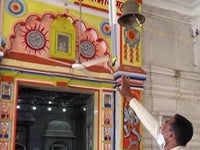 Touchless Technology, Untouchability, and the COVID-19 Pandemic
Touchless Technology, Untouchability, and the COVID-19 Pandemic
The everyday life of humans has been severely affected by the outbreak of the COVID-19 pandemic. As India grappled to establish measures to combat the spread of the virus, the centrality of socio- cultural and religious traditions in the country took the shape of special religious adaptations that function as measures for disease prevention.... contributed by Ankana Das, 25 May 2021
 Forest People Confronted by COVID-19: Representations, Rituals and Practices of Pala’wan Highlanders
Forest People Confronted by COVID-19: Representations, Rituals and Practices of Pala’wan Highlanders
The Pala’wan Highlanders form a small egalitarian forest society living in the island bearing the same name in the Philippine archipelago. The habitat of these hunters equipped with blowpipes, gatherers and shifting agriculturists is scattered, forming small hamlets separated by valleys around Mount Mantalingahan... contributed by Nicole Revel, 21 May 2021
 COVID-19 and Social Responsibility of Dao Mau’s Ritual Practitioners
COVID-19 and Social Responsibility of Dao Mau’s Ritual Practitioners
A 26 year old spirit medium donning a pair of glasses and a disposable mask knocked on the main gate of an ancient temple in a suburb of Hanoi. The temple is dedicated to deities of Dao Mau - the Vietnamese beliefs in the Mother Goddesses of Three Realms. A few minutes later, the large, thick wooden gate still remained closed.... contributed by Tran Thi Thuy Binh, 19 May 2021
 Gods of Democracy: Divination and Epidemic Prevention in Taiwan, 2020
Gods of Democracy: Divination and Epidemic Prevention in Taiwan, 2020
This is the story of a struggle, an unlikely yet successful survival story composed of 366 days. It tells how a democratic country became an anomaly in the world in 2020, not to mention that it has always been so since 1949. It’s the story of how a particular religious tradition became another tradition, the antithesis of secularist notions of democracy and religion.... contributed by En- Chieh Chao, 11 May 2021
 The Transformation of Temple Operations in (post-) COVID-19 China
The Transformation of Temple Operations in (post-) COVID-19 China
This blog post documents preliminary research findings on the reconfiguration of temple operations in (post-) COVID-19 China, which is part of a collaborative research project titled ‘Religion going viral: Pandemic transformations of religious lives and ritual performances in Asia’... contributed by Chen Ningning, 6 May 2021
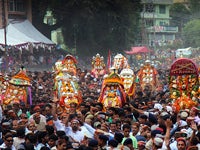 Gods Not Allowed: Restrictions and Repentance in International Kullu Dussehra 2020
Gods Not Allowed: Restrictions and Repentance in International Kullu Dussehra 2020
The International Kullu Dussehra held in October 2020 was a controversial affair. In normal circumstances, this annual religious and cultural festival would attract a large number of devotees, traders, tourists and deities to the Dhalpur maidaan (ground) in Kullu, Himachal Pradesh, India. In 2020, however, the COVID-19 pandemic compelled the Kullu administration... contributed by Ishita Mahajan, 29 April 2021
 The Coronavirus Pandemic and the Response of Hoa Hao Buddhists in the Vietnam’s Mekong Delta
The Coronavirus Pandemic and the Response of Hoa Hao Buddhists in the Vietnam’s Mekong Delta
The COVID-19 pandemic has affected many people in the Vietnamese Mekong Delta as strict border control measures, especially restrictions placed on the Vietnam-China trade since the second outbreak of the disease in July 2020, have put many agricultural processing factories at risk - resulting in many local enterprises and small businesses to face difficult economic times... contributed by Vo Duy Thanh, 22 April 2021
 Fractured Fluidity, Reified Ritual: E-snan and Changing Dynamics of Makar-snan during COVID-19
Fractured Fluidity, Reified Ritual: E-snan and Changing Dynamics of Makar-snan during COVID-19
As the plaguing pandemic of COVID-19 swept the world, the months-long hiatus brought by lockdowns and ‘physical distancing’ has left dramatic impacts on every walk of life including the realm of religious practices. With several of the religious meanings being re-negotiated and ritual praxis being altered in light of the frightening fragility... contributed by Nabanita Samanta, 13 April 2021
 The Cap Go Meh that Never Happened (2)
The Cap Go Meh that Never Happened (2)
On February 21, 2021, the final meeting between the Singkawang city government and the religious councils was planned regarding the holding of Cap Go Meh this year marked by the global COVID-19 pandemic. That meeting was postponed to February 22, because the mayor had to go to Jakarta to receive an award from the Setara Institute... contributed by Emily Hertzman, 7 April 2021
 The Impact and Challenges of the COVID-19 Pandemic on Christianity in Thailand
The Impact and Challenges of the COVID-19 Pandemic on Christianity in Thailand
Since the global outbreak of COVID-19 at the end of 2019, Thailand has experienced two peaks of the pandemic. Changing social behaviour in order to curb the outbreak has also deeply affected the religious field. Christianity currently has adherents who represent 1.2% of the total population in Thailand... contributed by Cui Feng, 5 April 2021
 Market Da’wa through COVID-19: The Case of American Muslim Preachers on YouTube
Market Da’wa through COVID-19: The Case of American Muslim Preachers on YouTube
Social media has been an important promoter of market Islam for the past two decades. As the COVID-19 pandemic has in many ways made social media central to the religious public sphere, it seems that the online boom has contributed to further popularizing online da’wa through social media platforms... contributed by Elad Ben David, 30 March 2021
 Buddhist Temples as Shelters for Vietnamese Migrants in Japan under COVID-19 Conditions
Buddhist Temples as Shelters for Vietnamese Migrants in Japan under COVID-19 Conditions
When the Japanese economy faced depression in 2020, one of the most affected groups in Japanese society were the foreign workers. Shrinking economic activity resulted in layoffs, and foreign workers were the first employees to be dismissed from many companies. These retrenchments were disastrous for 80,000 Southeast Asians residing in Japan... contributed by Yuki Shiozaki, 16 March 2021
 Is it Culture or Religion? Prohibiting Cap Go Meh while Maintaining Freedom of Religion (1)
Is it Culture or Religion? Prohibiting Cap Go Meh while Maintaining Freedom of Religion (1)
As COVID-19 cases continue to rise in Indonesia, more and more regulations are being put into place, including regionally. Singkawang, West Kalimantan, is classified as an Orange Zone: meaning that there is a small cluster outbreak which could potentially lead to a large cluster outbreak... contributed by Emily Hertzman, 5 March 2021
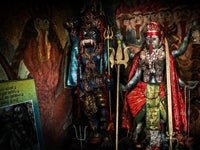 Miracle cure for COVID-19 in Sri Lanka: Kali and the politics behind ‘Dhammika Paniya’
Miracle cure for COVID-19 in Sri Lanka: Kali and the politics behind ‘Dhammika Paniya’
After months of curfews, lockdowns, and low infection rates, Sri Lanka’s COVID-19 case numbers spiked in October and November 2020. In early December, news emerged about a tonic called ‘Dhammika Paniya’ that had the power to prevent and heal the disease. Initially promoted as an Ayurvedic medicine, its inventor later attributed its strength to the goddess Kali... contributed by Catherine West & Kanchana Dodan Godage, 3 March 2021
 Sonic Fields of Protection in Sri Lanka’s COVID-19 Pandemic
Sonic Fields of Protection in Sri Lanka’s COVID-19 Pandemic
In this reflection on Buddhism and COVID-19, two anthropologists, Nalika Gajaweera and Neena Mahadev, explore the apotropaic practices of ritual chanting by Theravāda Buddhist monastics for protection against COVID-19 in Sri Lanka. The authors also engage a discussion of how Sinhala notions of national security (rata arakśawa kirīma) and practices of securitization are being extended beyond the domain of spiritually protective Dharmic energies to guard against the viral contagion.... contributed by Nalika Gajaweera and Neena Mahadev, 19 February 2021
 New Diseases, Old Deities: Revisiting Sitala Maa during COVID-19 Pandemic in Bengal
New Diseases, Old Deities: Revisiting Sitala Maa during COVID-19 Pandemic in Bengal
The Goddess Sitala, or the ‘Cool One’(Wadley 1980), is worshipped by Hindus in Bengal and several parts of Northern India, as a controller of illness, protector of children, and bringer of good fortune. She is commonly associated with poxes, (primarily smallpox)... contributed by Deepsikha Dasgupta, 11 February 2021
 Javanese Wayang Kulit Responses to the COVID-19 Pandemic
Javanese Wayang Kulit Responses to the COVID-19 Pandemic
Performances of the Javanese shadow theatre Wayang Kulit have traditionally been imbued with ritual character. Performances have been shown, for example, at important family or local celebrations, or during purification rituals for individuals or entire communities... contributed by Marianna Lis , 29 January 2021
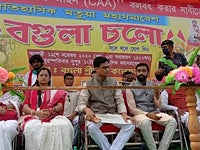 The Sonic and the Somatic: Matua Healing Practices during COVID-19
The Sonic and the Somatic: Matua Healing Practices during COVID-19
The disturbing times of COVID-19 have impacted the relatively unknown Matua religion and its devotees, especially their healing practices. As a religious and social movement suffering social wounds such as untouchability and displacement, the Matuas have historically deployed strategies of healing, not only in the medical sense of the term, but also within the framework of social upliftment... contributed by Dishani Roy, Raka Banerjee, Carola Lorea, Fatema Aarshe, Md. Khaled Bin Oli Bhuiyan & Mukul Pandey, 22 January 2021
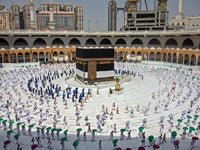 The Pandemic and its effect on the performance of Hajj Pilgrimage in Malaysia
The Pandemic and its effect on the performance of Hajj Pilgrimage in Malaysia
One of the biggest milestones to be achieved in a Muslim life is the performance of hajj in Mecca, which is the fifth pillar of Islam. It is no surprise then, that it would be a news of a lifetime for Saroni Raop, 73, when he received a letter from the Tabung Haji earlier this year in February 2020... contributed by Siti Zubaidah Ismail, 12 January 2021
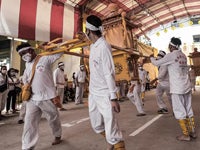 “Just Face the Nine Emperor Gods and Pray…(for) They will Understand:” Why was the Narrative of ‘Simplification’ Complex during the Festival of the Nine Emperor Gods in 2020? * (Part 2)
“Just Face the Nine Emperor Gods and Pray…(for) They will Understand:” Why was the Narrative of ‘Simplification’ Complex during the Festival of the Nine Emperor Gods in 2020? * (Part 2)
The role of ‘simplification’ in practice is also understood and manifested differently on many fronts. The same term – however applied – can be interpreted differently, and the examination of sacred time is instructive in this instance. Some temples chose to extend the operation hours... contributed by Esmond Soh, 8 January 2021
 “Just Face the Nine Emperor Gods and Pray…(for) They will Understand:” Why was the Narrative of ‘Simplification’ Complex during the Festival of the Nine Emperor Gods in 2020? * (Part 1)
“Just Face the Nine Emperor Gods and Pray…(for) They will Understand:” Why was the Narrative of ‘Simplification’ Complex during the Festival of the Nine Emperor Gods in 2020? * (Part 1)
During the ninth lunar month, temples in Singapore, Malaysia, Thailand, and other parts of Southeast Asia would celebrate the Festival of the Nine Emperor Gods. Besides the inviting and sending-off ceremonies - both large-scale events in themselves - a steady stream of devotees would visit Festival sites... contributed by Esmond Soh, 7 January 2021
 Convergence and Divergence in Health Messages: Spirit-Medium Advice about COVID-19
Convergence and Divergence in Health Messages: Spirit-Medium Advice about COVID-19
On September 3rd, 2020, Thjia Chui Mei, the mayor of Singkawang, West Kalimantan announced via a video on her Instagram account that she and her family had tested positive for COVID-19. In a series of videos that followed which were uploaded to YouTube, she documented her time in quarantine... contributed by Emily Hertzman, 28 December 2020
 Countering Violent Extremism Online: Global Best Practices and Potential for Implementation in Bangladesh
Countering Violent Extremism Online: Global Best Practices and Potential for Implementation in Bangladesh
Although terror attacks have existed since time immemorial, the September 11 attacks in New York marked a new chapter. It was a chilling reminder of the potency of violent extremism (VE) as we woke up to the existence of international terror networks... contributed by Sajid Amit & Lumbini Barua, 15 December 2020
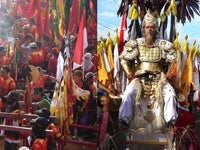 Hosting a God’s Birthday Party during Covid-19
Hosting a God’s Birthday Party during Covid-19
Singkawang, West Kalimantan is a small city with a majority Chinese Indonesian population in Borneo. It is a center of Chinese Religion and called the “City of a Thousand Temples''. My ongoing research confirms that there are over 250 temples, including large denominations of international Buddhist as well as smaller temples venerating specific gods... contributed by Emily Hertzman, 11 December 2020
 Coronasur, Folk Epistemologies, and the Pandemic
Coronasur, Folk Epistemologies, and the Pandemic
Foucault’s conceptual framework of long history seeks to understand change in terms of movements of slow accumulation and dissipation, as a rhythmic cycle of checks and balances. This slow movement of “material civilization,” where the concept of a rupture or discontinuity... contributed by Anjali Gera Roy, Banhi Chakraborty, Swatee Sinha, Trina Maitra, and Soumya Acharya, 2 December 2020
 Advice from Hell: Underworld Gods on a Live Stream
Advice from Hell: Underworld Gods on a Live Stream
Dua Ya Pek, the underworld god, had possessed a spirit medium. One of Dua Ya Pek’s followers used her smartphone to live stream the possession on Facebook, allowing his devotees from a small and private shrine in Selangor to meet with him online. Much of the online session followed a typical format of consultation with the deity in a private temple... contributed by Alvin Eng Hui Lim, 25 November 2020
 Religious Response To The Pandemic Among Bengali Hindus In West Bengal: A Survey
Religious Response To The Pandemic Among Bengali Hindus In West Bengal: A Survey
In this survey I look into the everyday religious performances of people belonging to various Bengali Hindu communities during the current global COVID-19 pandemic. In this situation where the world seeks healing on a large scale, I seek to infer the religious responses... contributed by Sreemoyee Pau, 19 November 2020
 Restless souls: The impact of COVID-19 on the funerary ceremonies of the Parsis in Mumbai
Restless souls: The impact of COVID-19 on the funerary ceremonies of the Parsis in Mumbai
With many European countries unfortunately experiencing a second outbreak of the COVID-19 pandemic, it is heartening to see that the situation in India is seeing improvement as the unrelenting rise of new positive cases since March of this year is finally slightly in decline... contributed by Mariano Errichiello, 12 November 2020
 Walking a fine line: Churches respond to COVID-19 in rural Indiana
Walking a fine line: Churches respond to COVID-19 in rural Indiana
Churches in the United States (US) have made global headlines for refusing to close their doors during state-wide mandated shutdowns and for contributing to coronavirus outbreaks, particularly when failing to follow protocols from the Centers for Disease Control and Prevention (CDC)... contributed by Michel Chambon and Erica M. Larson, 5 November 2020
 Religious Televisuality in the Time of Pandemic
Religious Televisuality in the Time of Pandemic
The Philippines is now on its sixth month of quarantine, hardly flattening the curve, no matter the spin of a government severely criticized for its politicking and misplaced priorities in the middle of the COVID-19 health crisis. The past few weeks registered new cases of about 2,000 to 3,000 daily and the general mood remains bleak, despite... contributed by Louie Jon A. Sánchez, 30 October 2020
 ‘We knew it!’ - Caribbean Hindu Responses to Restrictions of Touch during COVID-19
‘We knew it!’ - Caribbean Hindu Responses to Restrictions of Touch during COVID-19
On March 16, 2020, I received a message on social media from some of my Surinamese and Guyanese Hindu friends, who shared an image file that commented on the hygienic precautions and regulations enforced in an increasing number of nation-states during the emerging COVID-19 pandemic... contributed by Sinah Theres Kloß, 28 October 2020
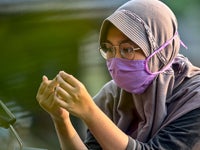 Re-envisioning the Ummah in the ‘New Normal’
Re-envisioning the Ummah in the ‘New Normal’
The emergence of the COVID-19 pandemic has undeniably been a watershed event in the 21st century. Much has been said about the various impacts of the pandemic, including the ways in which we organise and govern societies. These include forming new societal practices of safe distancing or the wearing of masks in public to ensure public health and safety... contributed by Nurul Fadiah Johari, 23 October 2020
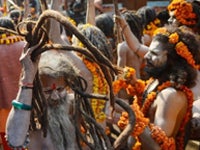 Chants of Synchrony
Chants of Synchrony
As women in North Indian states gather to worship and sing to please ‘Corona Mai’ (Coronavirus Goddess), onlookers might question the motivation to engage in effortful and ritualistic practices that do not involve immediate payoffs. These women are not alone in reverting to ‘socially scripted’ behaviors in the face of ecological threats, such as the presence of a virus. We have had numerous other examples in our history... contributed by Neha Khetrapal, 21 October 2020
 Coronavirus, Cults, and Contagion in South Korea
Coronavirus, Cults, and Contagion in South Korea
The skin plays a fundamental role in social relations, as captured by the Korean term “skinship.” Our skin helps to define us as individuals, but it is also a threshold (Eliade 1957). It is simultaneously a boundary of our bodies and a medium for communion with anyone—or anything—outside of them (Montagu 1971)... contributed by Heather Mellquist Lehto, 16 October 2020
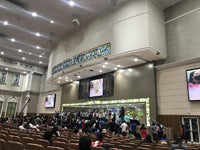 Conflicting narratives of Covid-19 in Brazil: How religion influences spatial behaviours in Belo Horizonte
Conflicting narratives of Covid-19 in Brazil: How religion influences spatial behaviours in Belo Horizonte
Religious identities are important factors influencing human behaviours in urban spaces. Using insights about the relationship between religion (Islam) and conceptualisation of public space as well as the relationship between social interactions and infrastructure from studies one author has conducted in Malaysia... contributed by Gabriela Alcantara Azevedo Cavalcanti de Arruda, Daniel Medeiros de Freitas, Carolina Maria Soares Lima, Krzysztof Nawratek & Bernardo Miranda Patar, 15 October 2020
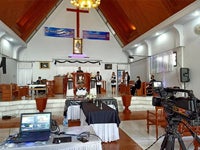 Minahasan Church’s Response to COVID-19 in North Sulawesi, Indonesia
Minahasan Church’s Response to COVID-19 in North Sulawesi, Indonesia
The first case of COVID-19 in Indonesia was announced by President Joko Widodo on March 2, 2020. Soon after, the government implemented a health protocol to prevent the spread of the coronavirus, initially called “social distancing,” but later replaced by the term “physical distancing.” Starting in Jakarta, the coronavirus then spread outward to other regions... contributed by Denni Pinontoan, 10 October 2020
 A Virus in the House of God: COVID-19 and Catholic Mass
A Virus in the House of God: COVID-19 and Catholic Mass
On 19 June 2020, Phase Two of Singapore’s circuit breaker began. COVID-19 restrictions were eased, and religious gatherings up to 50 people were allowed. The Roman Catholic Archdiocese of Singapore announced that Catholics could go to one weekend mass a month, starting from July... contributed by Beverly Anne Devakishen, 8 October 2020
 What’s in a Heart? Expressions of Thanks as a Form of Public Morality
What’s in a Heart? Expressions of Thanks as a Form of Public Morality
The first case of COVID-19 in Canada was recorded on January 25th 2020. By mid-March the country, like much of the rest of the world, was in lockdown with citizens instructed to stay home - not to go to work or school, and not to venture outside except for food, supplies or essential medical appointments... contributed by Emily Hertzman, 3 October 2020
 Shaping and Reshaping Traditional Culture in Bangladesh: The Folklore of Corona Times
Shaping and Reshaping Traditional Culture in Bangladesh: The Folklore of Corona Times
In the pathways of history, the people of Bangladesh have gone through natural disasters, political turmoil, and man-made catastrophes. In response, they have fought, resisted and survived using their resourcefulness. Traditional cultures in Bangladesh have always been used as a way to increase spiritual and mental strength... contributed by Saymon Zakaria, 1 October 2020
 3-Cs and the Three Mysteries: Japanese Esoteric Buddhism’s Response to the Covid-19 Pandemic
3-Cs and the Three Mysteries: Japanese Esoteric Buddhism’s Response to the Covid-19 Pandemic
How does religion make sense of the Covid-19 pandemic and rearticulate its relevance for a society where close-contact social life has been drastically reduced and people primarily communicate by digital means? In formulating innovative ways to engage society during the Covid-19 pandemic, esoteric Buddhism... contributed by Yijiang Zhong , 25 September 2020
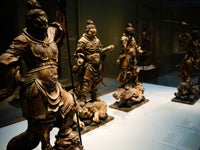 Protection without punishment: Turning to Buddhist gods during Covid-19
Protection without punishment: Turning to Buddhist gods during Covid-19
For political leaders today, a pandemic means never having to say you’re sorry. This has not always been the case. Once upon a time, in a different era, rulers publicly proclaimed their shortcomings, taking moral responsibility for a host of disasters, from droughts to epidemics, thought to be caused by the lack of virtue in a sovereign... contributed by Bryan Lowe, 23 September 2020
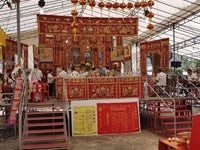 Prayers, Protocols and Pandemics, Part 2: Crowdsourcing without Crowds and the ‘New Normal’ of Religious Ethnography in Singapore after the Seventh Month Festivities
Prayers, Protocols and Pandemics, Part 2: Crowdsourcing without Crowds and the ‘New Normal’ of Religious Ethnography in Singapore after the Seventh Month Festivities
Previously, I have sketched out the broad contours of how popular interpretations and outlooks held by Singaporeans of the seventh lunar month have fed into, and also informed concerns and worldviews associated with the second phase of Singapore’s re-opening... contributed by Esmond Soh, 18 September 2020
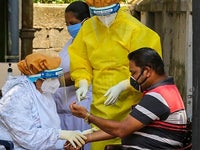 Implications of COVID-19 on Ethno-Religious Tensions in Sri Lanka
Implications of COVID-19 on Ethno-Religious Tensions in Sri Lanka
Ethnic tensions have risen in recent years in Sri Lanka. Three key junctures represent new features. First came clashes between Sinhala Buddhist and Muslim communities in the south of the island in 2014. These tensions bolstered hardline Sinhala Buddhist groups such as Bodu Bala Sena (BBS) that gained influence, and fermented an anti-Muslim rhetoric... contributed by Thamesha Tennakoon, 16 September 2020
 Impact of COVID-19 on the Life of Urban Buddhists in Thailand
Impact of COVID-19 on the Life of Urban Buddhists in Thailand
COVID-19 is no doubt a huge global health crisis. According to WHO, Thailand was the second country after China to have registered a COVID-19 case. Buddhist monks and local temples play a central role in towns and villages across Thailand. Monks engage with the community on a daily basis, while temples... contributed by Chidchanok Apipoonyanon, 11 September 2020
 Prayers, Protocols and Pandemics, Part 1: Do My Ancestors Need Masks? The Impact of Coronavirus on the Seventh Lunar Month Festivities in Singapore
Prayers, Protocols and Pandemics, Part 1: Do My Ancestors Need Masks? The Impact of Coronavirus on the Seventh Lunar Month Festivities in Singapore
Joss paper, as well as paper effigies of goods associated with this world, are indispensable offerings at any observation of the seventh lunar month in Sinophone societies, and Singapore is no exception to the rule. Just before the seventh lunar month, a friend texted me... contributed by Esmond Soh, 10 September 2020
 Responses by Islamic Mass Organizations and Ummah in Indonesia to Reduce the Number of Covid-19 Victims
Responses by Islamic Mass Organizations and Ummah in Indonesia to Reduce the Number of Covid-19 Victims
As the country with the fourth highest population in the world, Indonesia is very vulnerable to a pandemic. It would be a challenge for the government to control the mobility of more than 240 million people who spread across 34 provinces and more than 500 districts / cities located on many distinct islands... contributed by Mohammad Hidayaturrahman, 4 September 2020
 Do the Gods Have COVID-19 Too?: Protecting Idols, Cherishing Deities
Do the Gods Have COVID-19 Too?: Protecting Idols, Cherishing Deities
Do the gods also have the Coronavirus? Doctors diagnose in person”, reads the headline of a Tamil newspaper article about the Jagannath temple in Uttar Pradesh (UP), India. Under the orders of the monk-cum-chief-minister of the state, doctors are seen holding a stethoscope to listen to the internal sounds of... contributed by Indira Arumugam, 3 September 2020
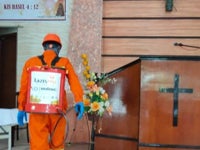 The Pandemic and Shifting Practices of Islamic Charity
The Pandemic and Shifting Practices of Islamic Charity
The Covid-19 pandemic has led to a shift in the practices of Muslim communities and Islamic charitable organizations in Indonesia. The pandemic not only has forced them to improve their fundraising methods but has also encouraged a jurisprudential review in charitable management... contributed by Amelia Fauzia , 28 August 2020
 Reactions of Touzi Buddhist Monastery in Tongcheng, Anhui, China to COVID-19
Reactions of Touzi Buddhist Monastery in Tongcheng, Anhui, China to COVID-19
Touzi Monastery is located on Mt. Touzi 投子寺, Tongcheng, Anqing, Anhui Province, and about 3 km away from the downtown area of Tongcheng. The monastery was first built in the Eastern Han Dynasty (25–220 AD) and initially named “Auspicious Monastery” (Shengyin si 勝因寺). It is believed that during the Three Kingdoms period... contributed by Chen Shouxin, 26 August 2020
 A bread and wine issue: The loss of Holy Communion during the pandemic
A bread and wine issue: The loss of Holy Communion during the pandemic
On February 14 2020, the Catholic Church in Singapore announced that all masses would be suspended until further notice due to the COVID-19 pandemic. Catholics were instead encouraged to watch broadcasts of masses online, which were mostly posted on... contributed by Beverly Anne Devakishen, 21 August 2020
 Borrowing Gold, Bothering Hindus? The Pandemic as not (quite) an emergency in India
Borrowing Gold, Bothering Hindus? The Pandemic as not (quite) an emergency in India
In early May, when the plight of the migrant workers had already cut a sordid picture of the Indian government’s botched handling of the national lockdown, a few public personalities floated a solution for a partial economic reprieve during the pandemic. M.K. Venu, a founding editor of the online news and... contributed by Swayam Bagaria, 19 August 2020
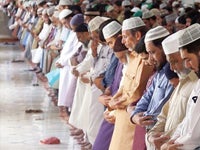 Moral and religious responses to the COVID-19 pandemic in Pakistan
Moral and religious responses to the COVID-19 pandemic in Pakistan
When the COVID-19 pandemic was rapidly spreading across the globe, Pakistan joined the global trend and declared a country-wide lockdown in mid-March. The lockdown inhibited major parts of the already struggling Pakistani economy from functioning in the typically uneven and unequal ways... contributed by Philipp Zehmisch, 14 August 2020
 Panchagavya, Gaumutra and Yoga: Re-inventing Hinduised Medical Practices in Times of Pandemic
Panchagavya, Gaumutra and Yoga: Re-inventing Hinduised Medical Practices in Times of Pandemic
The coronavirus has created a global crisis to which scientists have yet to give any decisive answer. Confronted with this huge danger, people are resorting to the repertoire of religion to cope with their anxiety and seek a meaning for the novel phenomenon, as well as... contributed by Arijita Manna, 12 August 2020
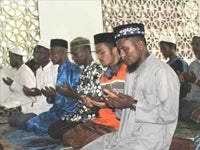 Grassroots Religio-cultural Elements Protect Rohingya Refugees During Covid-19 in Aceh
Grassroots Religio-cultural Elements Protect Rohingya Refugees During Covid-19 in Aceh
Since the outbreak of Covid-19, numerous countries have tightened their sea border controls. In mid-April 2020, 382 Rohingya refugees in the maritime borders of Malaysia and Thailand were rejected entry because of concerns regarding the spread of Coronavirus... contributed by Nia Deliana, 11 August 2020
 Inverted Sociality: Muslim Indonesia Celebrating Idul Fitri without Mudik
Inverted Sociality: Muslim Indonesia Celebrating Idul Fitri without Mudik
Idul Fitri 1 Shawwal 1441 Hijri has just passed. In contrast to previous years, this year left a very deep impression for Muslims in Indonesia. The Covid-19 pandemic has led to new ways of celebrating holidays. Muslim Indonesia’s tradition of going home or “kampong halaman” (called mudik) and hospitality (called unjung-unjung) that is usually carried out... contributed by Finsensius Yuli Purnama, 7 August 2020
 Hospital ministry under coronavirus lockdown
Hospital ministry under coronavirus lockdown
My father, Gerry, is a veteran missionary for a small local Christian congregation in the Philippines that has held Sunday service at a hospital for the last fourteen years. Assisted by my mother Beth, he has done missionary work in various workplaces since the 1980s. His current post in the Palliative Care Unit, an office specializing in... contributed by Geronimo Cristobal, 6 August 2020
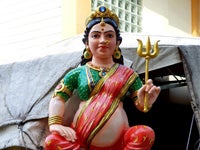 Sites of Worship during the Pandemic – A Pedestrian Photo-essay from the Heartlands
Sites of Worship during the Pandemic – A Pedestrian Photo-essay from the Heartlands
In this photo-essay I curate and collage a visual narrative based on my experiences walking around religious sites in my new-old neighbourhood of Toa Payoh, a prototype Housing Development Board (HDB) town located in central Singapore. By ‘walking through social research’ (Bates & Rhys-Taylor 2017) and using pedestrian phone-photography, I initially set out... contributed by Chand Somaiah, 31 July 2020
 Japanese Folk Monsters for Covid Struggle: The Life History of a Yokai from Prophecy to Blessing
Japanese Folk Monsters for Covid Struggle: The Life History of a Yokai from Prophecy to Blessing
On April 9, 2020, the Ministry of Health, Labour and Welfare of Japan announced a mysterious creature named Amabie (アマビエ) as the official logo of the “STOP COVID-19” movement launched by the Ministry, in efforts to “inspire the youth” to help halt the pandemic... contributed by Lei Ting and Zhao Yuanhao, 30 July 2020
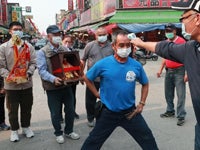 To Go or Not to Go? Mazu’s Annual Procession in Taiwan amidst the COVID-19 Pandemic
To Go or Not to Go? Mazu’s Annual Procession in Taiwan amidst the COVID-19 Pandemic
In the first half of 2020, the whole world was impacted by the COVID-19 pandemic. As strict border controls were timely imposed, disruption to the daily lives of the Taiwanese was less severe. Chinese folk temples in Taiwan also implemented anti-COVID measures such as taking temperatures of visitors and ensuring social distancing. The four-day long holiday... contributed by Peng Chew Lim and Hsun Chang, 24 July 2020
 Turmeric and Neem: Sacred Herbs, Disease Goddesses and Grappling with Epidemics in Popular Hinduism
Turmeric and Neem: Sacred Herbs, Disease Goddesses and Grappling with Epidemics in Popular Hinduism
Today, there are over 48,000 cases of COVID-19 in Singapore and counting. In mid-February 2020 however, the virus was still gathering force. Two major clusters had been found in two church premises. Suspending their live masses, churches had closed. Buddhist temples and mosques were also being encouraged to livestream their services... contributed by Indira Arumugam, 22 July 2020
 Will Guan Di Gong be sharpening his blade during COVID-19? Temples’ celebrations as Singapore enters ‘Phase 2’
Will Guan Di Gong be sharpening his blade during COVID-19? Temples’ celebrations as Singapore enters ‘Phase 2’
It is widely known by readers of the classical novel Romance of the Three Kingdoms (《三国演义》) that Guan Yu (关羽) possessed a piece of weapon, literally named the “Green Dragon Crescent Blade” (青龙偃月刀), which he used to eliminate enemies during warfare. When translated into the context of Chinese... contributed by Ke Hong Lim, 17 July 2020
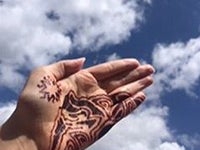 “Burden us not with that which we have no ability to bear”: cultivating endurance through digital connection in Ramadan
“Burden us not with that which we have no ability to bear”: cultivating endurance through digital connection in Ramadan
“Ramadan 2020 will be a very different experience for Muslims all over the world”, acknowledged the Muslim Council of Britain in April 2020. The COVID-19 pandemic and attendant lockdown in the UK prohibited customary observations of Ramadan, forcing the speedy development of alternatives. Recognising that religious practices are... contributed by Yasmeen Arif, 15 July 2020
 Serving the ‘Other’ During the Pandemic: Hindu Nationalist Groups and Covid Relief in India
Serving the ‘Other’ During the Pandemic: Hindu Nationalist Groups and Covid Relief in India
What does it mean for religious and cultural groups to serve the ‘other’ in times of a pandemic? Is it spontaneous altruism that motivates this service or mere rational reckoning? Or is it a deliberate attempt at constructing a ‘secular’ image for itself? In India, amidst the many religious and cultural groups... contributed by Malini Bhattacharjee, 9 July 2020
 The Material, the Social, and the Viral: The Efficacy of Virtual Responses to Pandemic Times
The Material, the Social, and the Viral: The Efficacy of Virtual Responses to Pandemic Times
I remembered laughing in front of the movie directed by Jack Neo, “I Not Stupid”, when an elderly lady was told that her son who was overseas could actually download and print a talisman to secure the blessings of the deity she was consulting. The deity through the spirit medium in the temple had written talismans but the lady was not able to send them to her son in time for his examinations. The assistant of the spirit... contributed by Koh Keng We, 8 July 2020
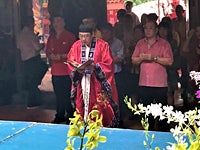 Daoism and Disease in China and Diaspora
Daoism and Disease in China and Diaspora
Epidemics had a significant influence on the founding and spread of China’s major religions. In the nearly five hundred years between 206 BCE and 265 CE, imperial histories record roughly one epidemic every 7.6 years. These make for some of the early empire’s highest recorded mortality rates, ranging between 45 and 85 percent (Li Wenbo 2004, 1). The last century of the Han Dynasty... contributed by Michael Stanley-Baker, 6 July 2020
 Saint Corona, CoronAsur, and Corona Devi: New Embodiments of the Relationship between Religion and Disease
Saint Corona, CoronAsur, and Corona Devi: New Embodiments of the Relationship between Religion and Disease
Saint, demon, and goddess – we seem to be at the mercy of Corona. The relation between religion and health probably dates back longer than both these terms exist, and pandemics have marked particular moments of this historical connection. Hagiographic accounts and oral narratives about divine forms from different parts of the world... contributed by Natalie Lang, 3 July 2020
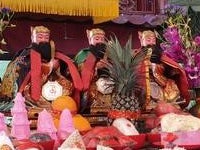 Covid-19 and Its Impact on Local Temple Events and Related Economic Activities in Singapore
Covid-19 and Its Impact on Local Temple Events and Related Economic Activities in Singapore
In Singapore, temples and sintua 神坛 (private altars) usually host many activities, from the regular first and fifteenth day of the lunar month to the feast days of the Gods and other festivals such as Chinese New Year. As most Chinese temples do not have a subscription based membership... contributed by Victor Yue, 30 June 2020
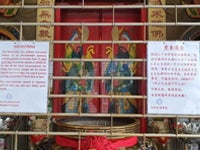 Ritual Adaptations on Telok Ayer: Liturgical Negotiations in a Chinese Temple and a Methodist Church
Ritual Adaptations on Telok Ayer: Liturgical Negotiations in a Chinese Temple and a Methodist Church
In my previous post, I shared my personal experience and methodology in conducting ethnography research without the usual embodied fieldwork as the pandemic evolved. In this post, I will share some of the findings I had gathered in my capacity as an independent researcher working on Singapore Heritage Society (SHS)’s historic places of... contributed by Lynn Wong, 26 June 2020
 The Persistence of God in the Times of COVID 19
The Persistence of God in the Times of COVID 19
Sociologists are famously trained to understand that God/Gods/Goddesses are representations of the societies which acknowledge them. Marcel Mauss believed that when humans forget their Gods, the Gods die. So why is there such intensity of belief?... contributed by Susan Visvanathan, 25 June 2020
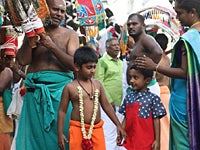 From Field to Digital Ethnography: Observing Ritual Transformations in Singapore’s Historic Places of Worship
From Field to Digital Ethnography: Observing Ritual Transformations in Singapore’s Historic Places of Worship
2020 was supposed to be a year packed with fieldwork for me. I have just completed conducting a season of Bicentennial Walking Workshops on historic places of worship and have spent the last quarter of 2019 establishing contacts with 11 kinship-based clan associations that are over 100-years-old to document their intangible cultural... contributed by Lynn Wong, 23 June 2020
 Spiritualizing Confinement and the Rise of Meditation Apps
Spiritualizing Confinement and the Rise of Meditation Apps
A quick look at the last posts published on our blog CoronAsur will suffice to state that numerous religious communities have employed all the technologies at their disposal to livestream rituals and host online gatherings, in a ‘virtual’ as opposed to ‘physical’ realm. These phenomena have... contributed by Carola Lorea, 19 June 2020
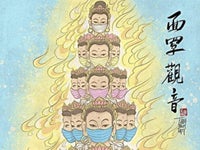 Why Was Thousand-hand Guanyin Late for the Meeting? Implications of Religious Humour During COVID19
Why Was Thousand-hand Guanyin Late for the Meeting? Implications of Religious Humour During COVID19
Humour serves to release tension while religion renders emotional support. The global pandemic COVID19 puts to test not only the current state of medical sciences and government effectiveness, but also the devotion towards one’s faith. The closure of places of worship and mandatory suspension of religious activities... contributed by Dean Wang, 18 June 2020
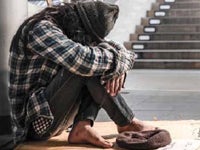 A Christian Response to the COVID-19 Pandemic
A Christian Response to the COVID-19 Pandemic
I am writing in a personal capacity about the response of a local Christian congregation and an inter-denominational Christian organization called the Bible Society of Singapore (新加坡圣经公会). To many Christians, their response was to meet new needs of the community generated by the pandemic... contributed by Lee Soo Ann, 17 June 2020
 Cov-Eid Images as Event and Archive
Cov-Eid Images as Event and Archive
This post tracks images of Ramadan and Eid rituals transplanted from mosque to home during the Covid-19 pandemic. Using an online mini mosque campaign, and its coda, the home-delivered khutbah (sermon) on the morning of Eid-ul-Fitr as entry points, I analyse these pictures as event and archive... contributed by Faizah Zakaria, 12 June 2020
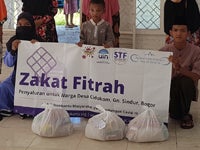 Covid-19 and the Blessings of Online Zakat in Indonesia
Covid-19 and the Blessings of Online Zakat in Indonesia
The fasting month of Ramadhan is the time when the majority of Muslims pay zakat, almsgiving. These are of two kinds: zakat fitr—a kind of poll-tax given before the Eid Fitr--and zakat maal, or the payment of about 2.5 percent of one’s wealth once a year, for those eligible. Some give it directly to the... contributed by Amelia Fauzia, 11 June 2020
 Double Pressure: Reflections on Buddhist College of Singapore’s Responses to the COVID-19 Pandemic
Double Pressure: Reflections on Buddhist College of Singapore’s Responses to the COVID-19 Pandemic
The Buddhist College of Singapore (BCS) has long been one of the most important Buddhist education institutions in Singapore. Since its establishment in 2005 and beginning operation in 2006, BCS has been in operation for more than a decade. The unprecedented pandemic brings double impact to the institution... contributed by Ji Yun, 10 June 2020
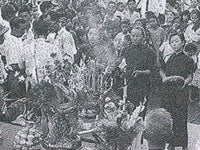 Re-sensorializing Chinese Religion in Singapore?
Re-sensorializing Chinese Religion in Singapore?
The spread of coronavirus in Singapore and the social distancing measures implemented to stop the spread of the virus disrupted the balanced interaction between Chinese temples and their devotees, both socially and economically. Given the constraint of space... contributed by Ying Ruo Show, 04 June 2020
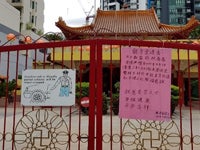 Chinese Temples Go Online
Chinese Temples Go Online
From 7 April to 4 May 2020, the first round of an elevated set of control measures, known as the Circuit Breaker (CB), was implemented in Singapore to minimise the spread of COVID-19. The Circuit Breaker was further extended to 1 June, introducing stricter measures to curb the increasing number... contributed by Ying Ruo Show, 4 June 2020
 Lingji: A religious response to COVID-19 from Taiwan
Lingji: A religious response to COVID-19 from Taiwan
The lingji tradition first appeared in Taiwan in the mid-1960s in Hualien City, and found mass popularity across Taiwan by the early 2000s. I will first describe the tradition, its cosmology, ritual practices, material culture and identification with a Taiwanese... contributed by Fabian Graham, 04 June 2020
 Catholic Liturgical Televisuality in the Time of Pandemic
Catholic Liturgical Televisuality in the Time of Pandemic
On the Catholic Church’s commemoration of World Communication Sunday last May 24, 2020, the Philippines marked day 69 of the state’s enhanced community quarantine (the strictest form of quarantine enforced in high risk places), which started on March 15. Expected to end by... contributed by Louie Jon A. Sánchez, 04 June 2020
 Cyber Dharma: Celebrating E-Vesak in Singapore
Cyber Dharma: Celebrating E-Vesak in Singapore
Buddhists in Singapore, which make up about a third of the population, are the religious majority in the global city-state. Although most Singaporean Buddhists are ethnic Chinese belonging to the Mahayana tradition, Theravada and Vajrayana Buddhist traditions are also present and popularly practiced... contributed by Jack Meng-Tat Chia, 03 June 2020
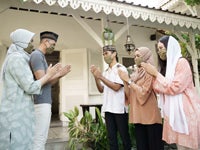 Seeking Solidarity: Rethinking the Muslim Community in the Pandemic Era
Seeking Solidarity: Rethinking the Muslim Community in the Pandemic Era
Ramadan has just ended, and it has been a very unsettling one, to say the least. So many aspects of our religious lives, one that is very much to the idea of the community, have to be readjusted. Though, as some would put it, physical distancing does... contributed by Nurul Fadiah Johari, 02 June 2020
 Standing by the Faith and Reaching Out to the Community: Yiguandao’s Response to the COVID-19 Pandemic
Standing by the Faith and Reaching Out to the Community: Yiguandao’s Response to the COVID-19 Pandemic
Originating from mainland China, Yiguandao is one of the Chinese religious movements that regards the union of the Three Teachings (Buddhism, Daoism, Confucianism) as its religious core. In modern times, Yiguandao has moved towards Confucianism as its main mode of cultivation. Having developed in Taiwan for nearly 75 years, Yiguandao is one of the three main religious groups... contributed by Shen Yeh-Ying, 31 May 2020
 Religion has gone online. Wasn’t it already there?
Religion has gone online. Wasn’t it already there?
Online religion is much like online sex: it can be done, but it is rather, well… lame. At least this seems to be the case for those who try to take practices meant for actual human bodies to experience and replicate them using digital media platforms. For a class that I am currently teaching in Tokyo, I have nine groups of students doing research on the impact that religious practices that have gone... contributed by Bernardo Brown, 30 May 2020
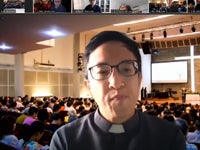 Gods Have Eyes: Praying Online in Singapore
Gods Have Eyes: Praying Online in Singapore
Going to church in the early 2000s, I was used to PowerPoint slides that were projected on a big screen, magnifying long scriptural passages and song lyrics—Arial font, size 14 to 16—for the congregation to read. In fact, I had the experience of reading aloud from the bible, on the pulpit, and behind me were those verses. By the time churches began to embrace live broadcasting and online streaming... contributed by Alvin Lim, 29 May 2020
 Limits in Practice: Experiencing Chinese Religion in Cyberspace
Limits in Practice: Experiencing Chinese Religion in Cyberspace
The Circuit Breaker (CB) measures that had been in-place since April 2020 had prompted many religious activities to leap into cyberspace. Among them is the Lorong Koo Chye Sheng Hong (City God) temple, where devotees are invited to worship the temple’s deities through live video-recordings of the premises’ altar ... contributed by Esmond Soh, 28 May 2020
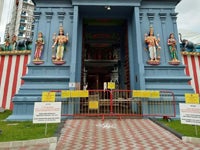 “Itching to See the Goddess”: Anthropological Questions on Religious Practice during a Pandemic
“Itching to See the Goddess”: Anthropological Questions on Religious Practice during a Pandemic
Every week since January 2020, Mageshwari reminded me of the special prayer that she was going to sponsor at a Hindu temple in Singapore in March 2020. Mageshwari is a lady in her fifties who came to the temple at least once a week and and helped as a volunteer on a regular basis. For weeks, she was busy planning this special... contributed by Natalie Lang, 27 May 2020
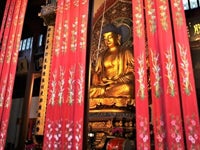 How is Chinese Buddhism Coping with the COVID-19 Pandemic?
How is Chinese Buddhism Coping with the COVID-19 Pandemic?
Chinese Buddhists have been seriously influenced in various ways by the outbreak of coronavirus in China in December 2019. The direct result is the closure of monasteries to the public and the halt of public religious activities. According to government orders, Buddhist monasteries have been ordered to close their doors since... contributed by Nan Ouyang, 22 May 2020
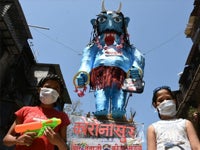 CoronAsur: Religion, senses and media at the time of the Corona-demon
CoronAsur: Religion, senses and media at the time of the Corona-demon
As I write this post in the midst of the COVID-19 pandemic, our lives are being unprecedentedly forced into isolation and restricted mobility. Our socialisation of life and death is deprived of the communion of togetherness. ‘Lock-downs’ and ‘circuit breakers’ are muting and mutating the sonorous profile of our inhabited spaces. Days are strangely still and noiseless... contributed by Carola Lorea, 18 May 2020

